Guy Moll: The Genesis of Algerian Pilots
- COCKPIT

- Aug 23
- 9 min read

Guillaume Laurent Moll, commonly known as "Guy," was born in 1910 in Rivet (now called Meftah) in the Blida region, southeast of Algiers. The son of a Spanish mother and a French father who had emigrated to Algeria, he spent his life in colonial Algeria.
Guy began his career competing on motorcycles on the Algerian circuits, before making a late debut in automobile racing in 1930, at the Lorraine-Dietrich during a few events organized in the French department of Algeria. It was there that he was noticed in 1932 by the famous Algerian racing driver of the time, Marcel Lehoux, whose profile we will soon feature. He then ran a wholesale business in Algiers and lent him his Bugatti for the Oran and Casablanca Grand Prix.

A few months later, Guy Moll made his European debut by participating in the Marseille Grand Prix, held on September 25, 1932, at the Miramas circuit. He competed against drivers like Sommer, Nuvolari, Chiron, Dreyfus, Fagioli, and Varzi, the best drivers of the time, in factory Alfa Romeos, Maseratis, and Bugattis. Moll drove the Bugatti he had purchased a few months earlier—not a small sports car or a 1.5-liter voiturette, but a heavy 2.3-liter turbocharged car. He started from the back row of the grid and managed to finish an impressive third, behind winner Raymond Sommer and Nuvolari. An unexpected podium result for observers.
For the 1933 season, Guy Moll ordered an Alfa Romeo 8C 2300 Monza, but its delivery took time. His first outing of the season came at the Pau Grand Prix in February, once again in Lehoux's Bugatti. The course was snowy and muddy after the previous day's snowfall, and Moll quickly mastered the atrocious conditions, finishing second behind his mentor Lehoux in a works Bugatti, but ahead of Philippe Étancelin's Alfa Romeo.

In June, he took part in the 1933 24 Hours of Le Mans (retired along with Guy Cloitre, in an Alfa Romeo 8C 2300 LM “Mme Heldé” (evoking Hellé-Nice, but also the initials of Louis-Dreyfus)

His Alfa Romeo became available mid-season, and in July, Guy Moll led the Grand Prix de la Marne until his retirement. In August, he achieved a fine third place at the Grand Prix de Nice, behind Nuvolari in a new 3-litre Maserati and René Dreyfus in a Bugatti. He then finished third again in the Grand Prix de Miramas. Impressive results for a young driver in his first full season of motorsport!
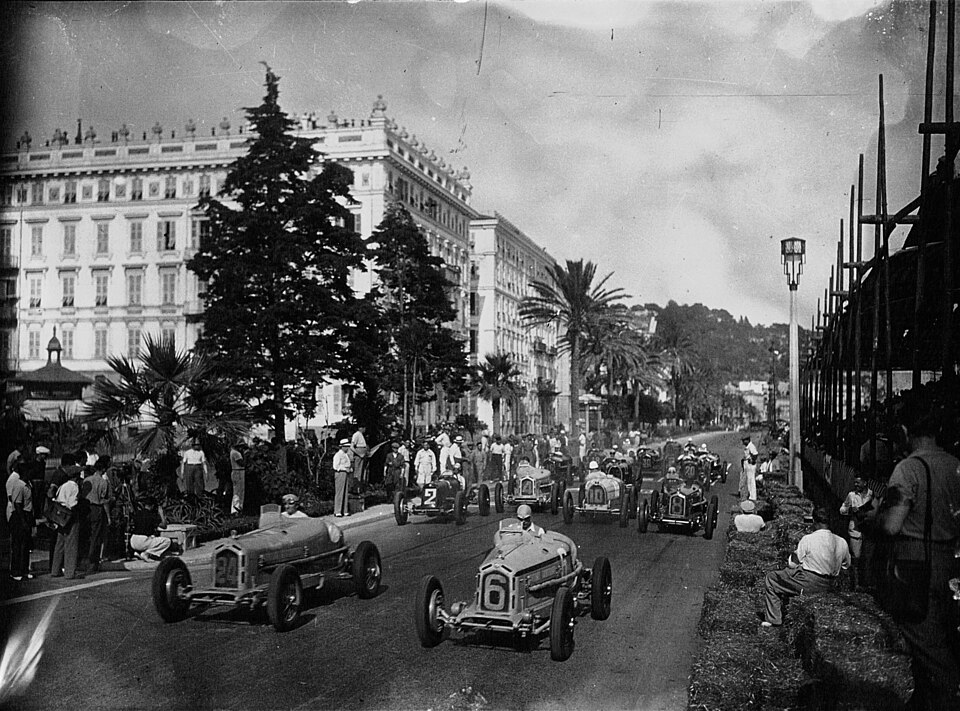
In September 1933, Moll moved to Monza for the Italian Grand Prix and finished second overall, setting the fastest lap of the race. But his extraordinary performance went unnoticed due to the great tragedy that occurred during the event, when three drivers, Baconin Borzacchini, Giuseppe Campari, and Stanislaus Czaykowski, were killed in two separate accidents. Before the start of the races, Guy Moll had informed the stewards of the slippery condition of the track, but no one listened to him, and a few hours later, three exceptional drivers had lost their lives.
His meeting with Enzo Ferrari
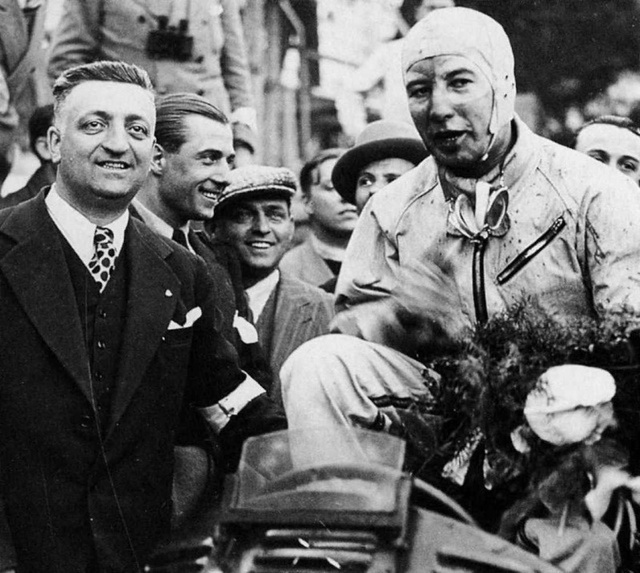
At the end of the season, the flamboyant young Algerian was hired by Enzo Ferrari to race alongside experienced teammates such as Varzi, Trossi, and Chiron. A major press campaign began in Italy at the time, insinuating that Moll had gotten the car just for his money. But Ferrari has consistently denied the rumors. It also confirmed that all of the Scuderia's drivers would be able to start the season at the same level.
The first major event of the 1934 season was the Monaco Grand Prix, and Moll surprisingly secured his first victory. He followed Louis Chiron throughout the race and overtook the Monegasque, who was probably inattentive while waving to the crowd, on the final lap. Moll drove his Alfa Romeo Tipo B 2600 at his best in front of thousands of spectators, showing great bravery and opportunism in his second year of racing, as a motorsport veteran.
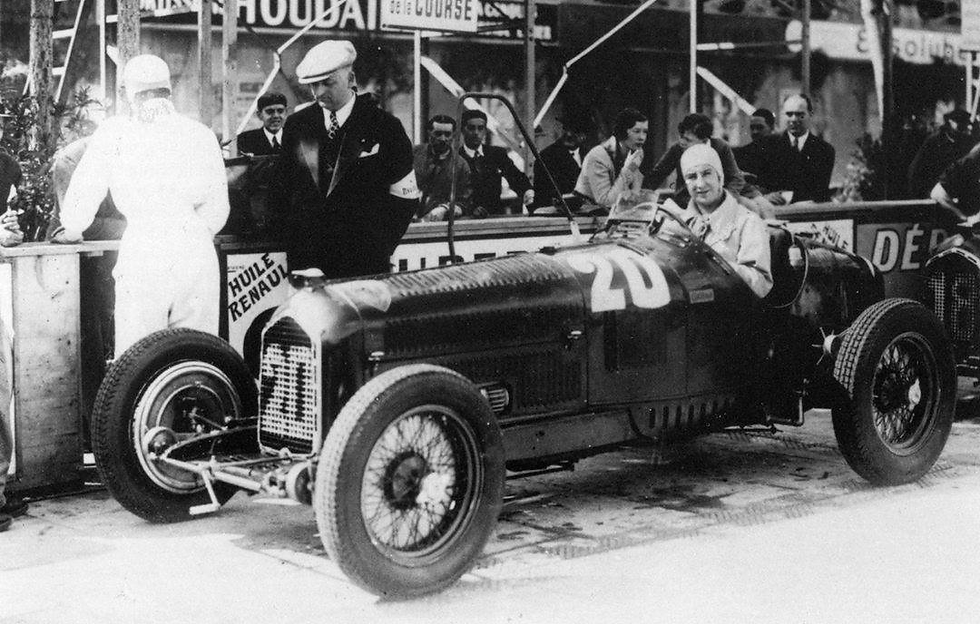
A month later, Scuderia Ferrari traveled to Libya, then an Italian colony, for the lucrative Tripoli Grand Prix. Moll decided to adopt the same strategy he had adopted in Monaco against Chiron. He followed Achille Varzi throughout the race and as he approached the very last corner, he came at full speed down the inside of the bend, trying to overtake his rival. Varzi was so astute and expert that he closed the corner in front of Moll, who was forced to brake hard, and Varzi won the race. The atmosphere was tense on the podium and the Algerian, who did not accept the verdict of the Grand Prix, stated in a press release that the result could have been rigged by Enzo Ferrari before the start of the race. Ferrari evidently avoided any comment and appeased Moll's anger, promising him the chance to drive a new 3.2-litre Alfa Romeo aerodynamic streamliner, designed by engineer Pallavicino, for the upcoming German Grand Prix, to be held on 27 May 1934, at Berlin's A.VUS (Automobil-Verkehrs-und-Übungs-Straße).

During the tests, Varzi also tested the new streamlined version of the Alfa Romeo, but he preferred his usual 2.9-liter Tipo B car, which he felt was more reliable. The Mercedes-Benz works team was not on the entry list for the AVUS Grand Prix, and only Auto Union represented Germany on the grid, against the Italian Maserati and Alfa Romeo teams. Hans Stuck and August Momberger led the race until lap 10, when Guy Moll in the faster Alfa Romeo took the lead. The small Algerian won the race with an average speed of 205.300 km/h (127.6 mph), taking the checkered flag a minute and a half ahead of his teammate Varzi. The first of the Germans was Momberger in third place.
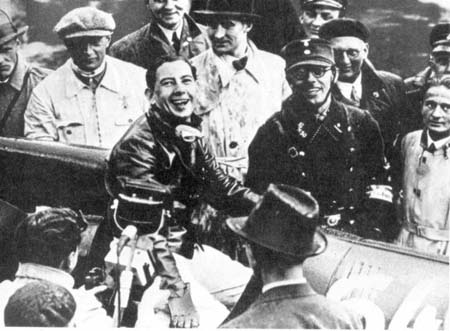
Rivalries within the team continued throughout the summer. In preparation for the French Grand Prix, held on July 1, 1934, at Linas-Montlhéry, Enzo Ferrari excluded Moll from the team, submitting only three entries for Varzi, Chiron, and Carlo Felice Trossi, who was the Scuderia's managing director at the time. Guy Moll was in the paddock, waiting for help from one of his teammates. In fact, during the fifth lap, Trossi rushed into the pits with problems, causing the car's gearbox to lose first and third gear. Moll asked Ferrari to test the car on the track, and despite the gearbox failure, he was able to restart and make up the deficit, securing third place overall at the finish line, behind Chiron and Varzi in a Scuderia Ferrari parade.
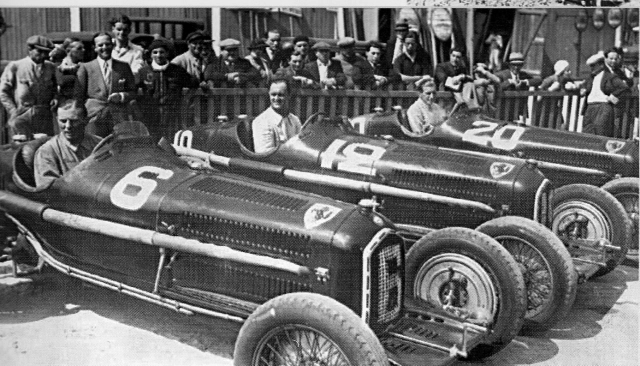
The next race, just 15 days later, was the Großer Preis von Deutschland at the Nürburgring. Stuck won, but Moll retired on lap six due to a gearbox problem. Then, in the Coppa Ciano held at the Montenero circuit in Livorno on July 22, 1934, Varzi emerged victorious after a huge battle with Moll, who finished second, setting the fastest lap of the race. While leading the field on his first start on the twisty Montenero circuit, Moll suffered a flat tire near the finish line. He stopped, changed tires, and just after a lap, he rejoined Varzi, who had taken the lead. Enzo Ferrari decided to signal both his drivers to slow down, maintaining their positions. As he signaled, Moll's car skidded just outside the pit lane; During the spin, the driver was able to signal to Ferrari that he had understood. Enzo Ferrari recounted this incident in his book "Piloti, che gente", emphasizing the composure of this courageous young driver.

About a month later, on Wednesday, August 15, 1934, Scuderia Ferrari took to the treacherous 25.6-kilometer Pescara circuit in central Italy for the Coppa Acerbo, with four Alfa Romeo Tipo B 2900s for Chiron, Varzi, Moll, and Pietro Ghersi. At Pescara, the Mercedes-Benz W25s of Rudi Caracciola, Luigi Fagioli, and newcomer Ernst Henne were extremely fast, performing very well during practice, with Henne being the fastest car over the timed kilometer of the long straight along the Adriatic Sea coast road, at a speed of 295 km/h (183.3 mph). At the time, Henne was a well-known motorcycle champion who was signed by Mercedes-Benz as a reserve rider for the 1934 season. He suffered a serious accident at the Nürburgring during pre-season testing and after a long recovery, the Coppa Acerbo in PescAra was his first ride of the year.
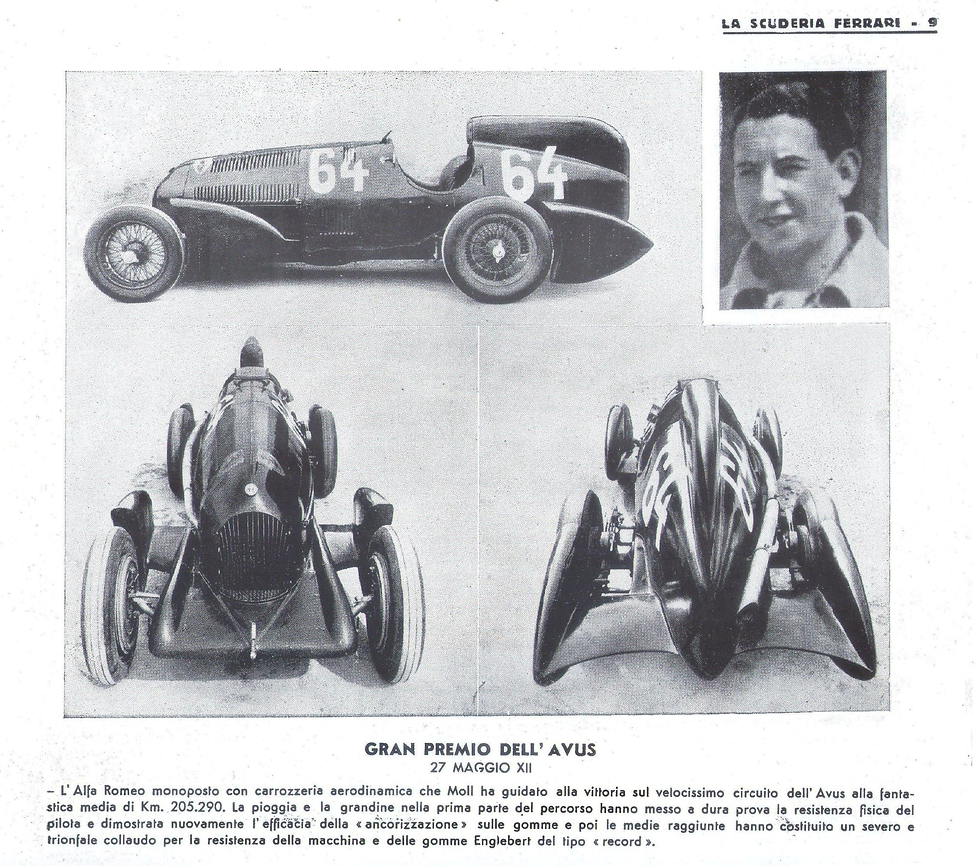
Bad weather and rain marred the day's racing, and when the Coppa Acerbo got underway, the track was wet and slippery. Caracciola, a wet specialist, immediately took the lead until lap eight when he went off track while going through a wet hilly corner, crashing violently into a field and sustaining minor injuries. Moll, Varzi, and Fagioli battled for first place. On lap 18, Varzi, who had taken over Ghersi's Alfa Romeo, pitted for new tires, and it was Fagioli's turn to take the lead. Following closely behind the Italian, Guy Moll traversed the twisty section of the track faster than he had ever done before. The home crowd sensed an Alfa Romeo victory as he pushed harder and harder to overtake Fagioli.
Guy Moll came across Henne's Mercedes-Benz W25, one lap behind the leaders, at the Cappelle sul Tavo hairpin. As they entered the 2.5-kilometer (1.5-mile) Montesilvano Straight, Moll attempted to overtake the German's car, traveling at around 270 km/h (167.8 mph). Henne had not expected such a dangerous overtaking maneuver on this narrow section, where he needed almost the entire width of the track just to keep his car on the road. But instead of waiting a few seconds to reach a section where the road widened, Moll gradually closed in on Henne in an attempt to overtake him. He was slightly ahead of Henne's Mercedes when his car moved too far to the left, the wheels slipped off the edge of the road and veered into the shallow ditch at the side of the road. For about 50 meters, the car remained under control. Moll braked sharply in a frantic attempt to get back on the road, but when one of its front wheels went over a manhole cover, the car swerved and hit the railing of a small bridge. The impact at over 220 km/h (136.7 mph) sent the car leaping into the air, somersaulting high, throwing the driver out of reach. The car continued to spin, coming to rest against the wall of a house about 400 meters away. Moll was found by onlookers who came to help him, lifeless on the other side of the road, against a concrete post. He was pronounced dead at the scene.

The exact cause of the accident has not been clarified, as it is highly controversial. According to the official investigation, a sudden gust of wind from the Scirocco probably caused Moll to veer off the road; the Italian press dismissed the investigation's findings, claiming that this was not possible because a gust of wind from the right side could have hit Henne's car first, and from the left side could have forced Moll to swerve towards the center of the road and not into the ditch on the left side. According to eyewitnesses, Henne initially steered towards the center of the road while trying to defend his teammate Fagioli, who was in the lead, from the attack of Moll, who was second. Marquis Antonio Brivio, who finished third in the race driving a Bugatti T59, stated that the accident may have occurred as a result of modifications to the front suspension made by Scuderia Ferrari shortly before the race, although this has not yet been confirmed.
Fagioli ultimately won the Coppa Acerbo race, ahead of Nuvolari's Maserati. The fastest lap of the race remains Guy Moll's narrow 10:51.

In his book Le Mie Gioie Terribili, Ferrari devotes three pages to the memory of Guy Moll. Here is a striking excerpt:
“Among the drivers who arrived at my Scuderia, Moll was not the first foreigner, but undoubtedly the first sensational driver. […] He was, in my opinion, the only driver who can be compared to Nuvolari, with our era Stirling Moss: similar to Nuvolari in certain mental affinities, the same aggressive spirit, the same serenity of driving, the same faith in taking risks…”

Following the Algerian's death, the Italian press launched baseless accusations, attempting to blame Henne for the accident, whose driving was described as savage and suspicious. After the disappointing 1934 Grand Prix season, Henne turned to sports car racing. He retired from active racing in 1938 and, after the end of World War II, opened a Mercedes-Benz garage in Munich, Germany. He died on the Spanish island of Gran Canaria in 2005, at the ripe old age of 101.
Guy Moll's death sparked an irreconcilable conflict between Enzo Ferrari and his cousin Renzo Saracco Ferrari, who had served as team manager since the early 1930s. The latter accused Enzo Ferrari of indirectly causing Guy Moll's death when he strongly encouraged him to pursue Henne. After the race, Renzo Saracco Ferrari left the Scuderia and his name no longer appeared as a member of the team.
The small town of Montesilvano, in the province of Pescara, commemorated Guy Moll with a bronze plaque, a square, and a park bearing his name, located along Via Vestina, near the end of the fast Montesilvano downhill straight where his fatal accident occurred. The plaque reads:
L’Audace Giovinezza
del Corridore Francese
Guy Moll
Votata al Trionfo dei Colori Italiani
Ebbe Tragica Fine
su Questo Circuito
nel XV Agosto MCMXXXIV VII EF
Il Comitato della Coppa Acerbo
nel I° Anniversario






Comments